

TESTING METHODS AND TECHNIQUES
Due to the complexity of the RRT+, the following six Group Priorities (GP1), managed by experienced and highly competent GP1 leaders, have been defined to adequately achieve the objectives of WG1:
GP1a - Fresh properties and setting
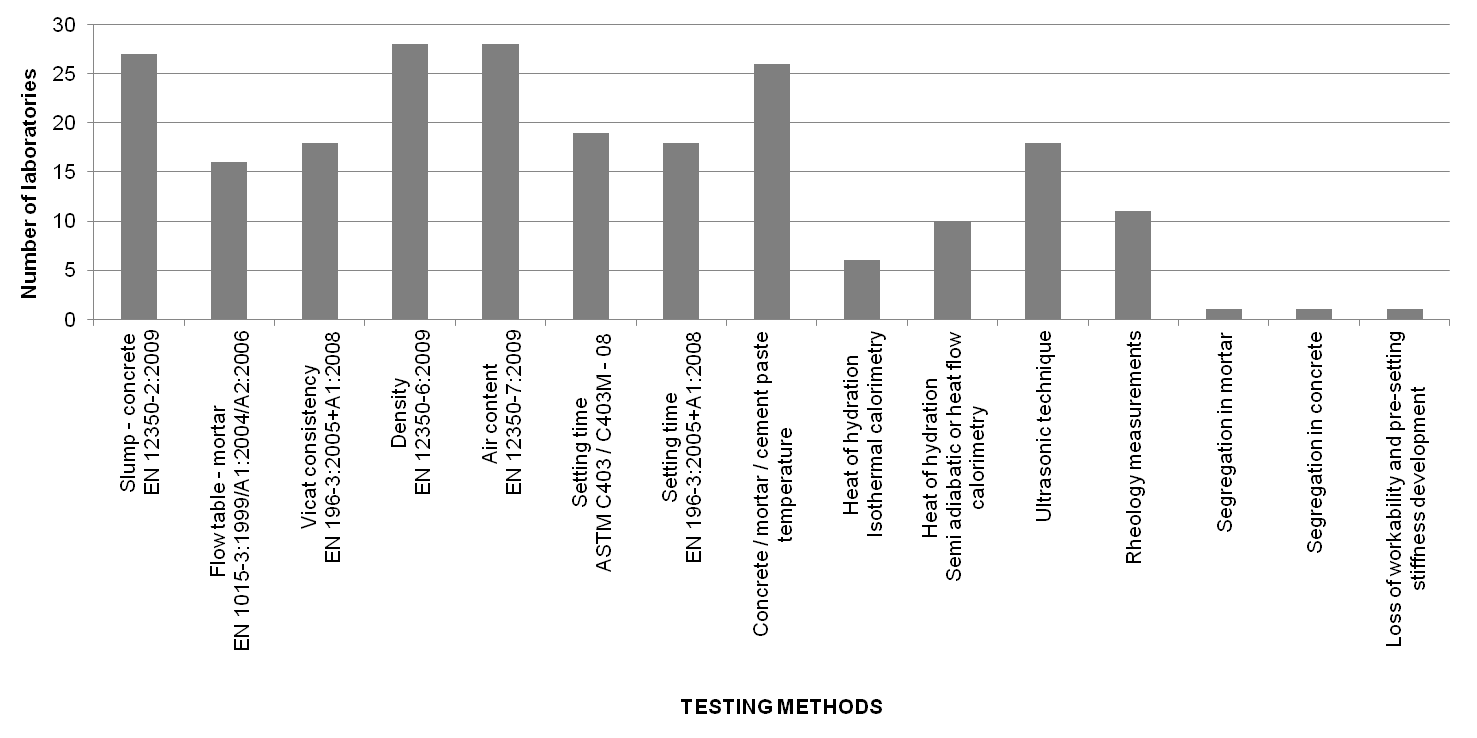
The main objective of this GP1 is to provide a platform for mutual validation of advance, non-standardised experimental techniques developed in European laboratories. Some of the techniques that will be included are:
- Heat of hydration;
- Ultrasonic testing;
- Rheology tests.
The main anticipated outcome is to evaluate efficiency and accuracy of considered advanced techniques to obtain certain parameters of concrete at early ages, as well as their repeatability and reproducibility.
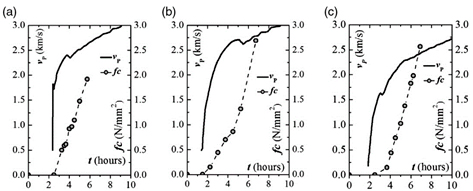
Relationship between vP–t and fc–t curves for concretes with different w/c ratio; a) w/c= 0.35, b) w/c = 0.40, c) w/c= 0.45 (Trtnik & Gams, 2015)
GP1b - Chemical and microstructural characterization
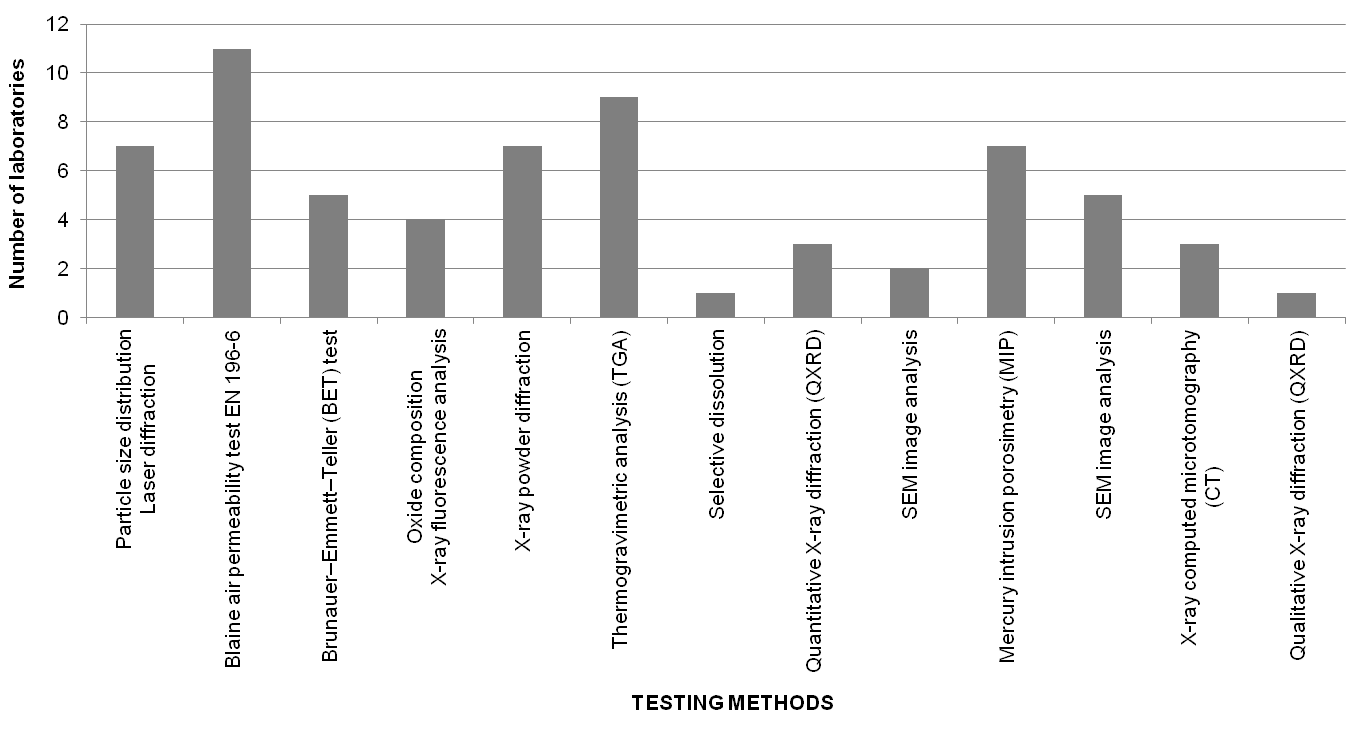
The main objective of this GP1 is to provide a platform for comparison of different protocols used in different participating laboratories for evaluating microstructural properties of CBM. Following techniques are planned to be included:
- Thermogravimetric analysis/differential scanning calorimetry (TGA/DSC);
- SEM-BSE image analysis;
- Selective dissolution (to identify unreacted SCMs by XRD analysis)
- Mercury intrusion porosity (MIP);
- X-ray computed microtomography (X-CT).
The main anticipated outcome is better understanding of the hydration and microstructure development of CBM in particular when SCMs such as conventional materials (blast furnace slag, fly ash, limestone) and new materials (locally available by-products and residues according to a specific interest of each country) are incorporated in the binder system to create eco-concrete mixtures.
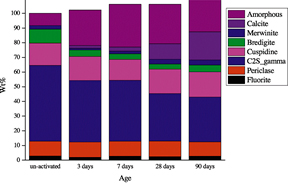
QXRD analysis of hydrated SSR 45 at different ages activated with Na-silicate and 5M NaOH in 50:50 ratio (Salman et al. 2015)
GP1c - Transport properties and boundary effects
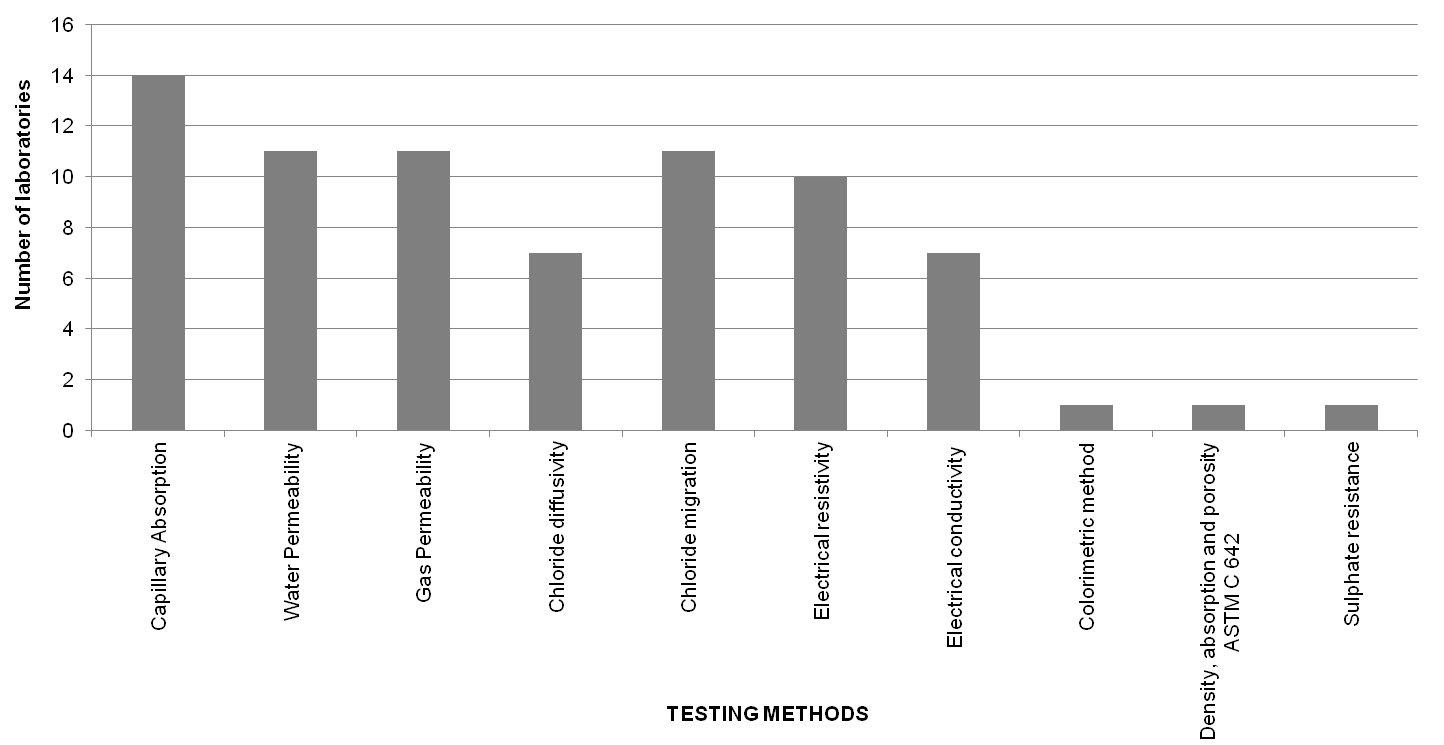
The aim of this work package is twofold: (1) to determine the transport properties that can be linked to a deterioration mechanism with emphasis to standard error and scope, and (2) to outline the boundary conditions, so that transport properties can be linked to models for predicting future behavior as identified in WP2.
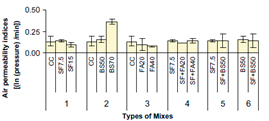
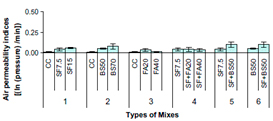
GP1d - Mechanical properties and creep
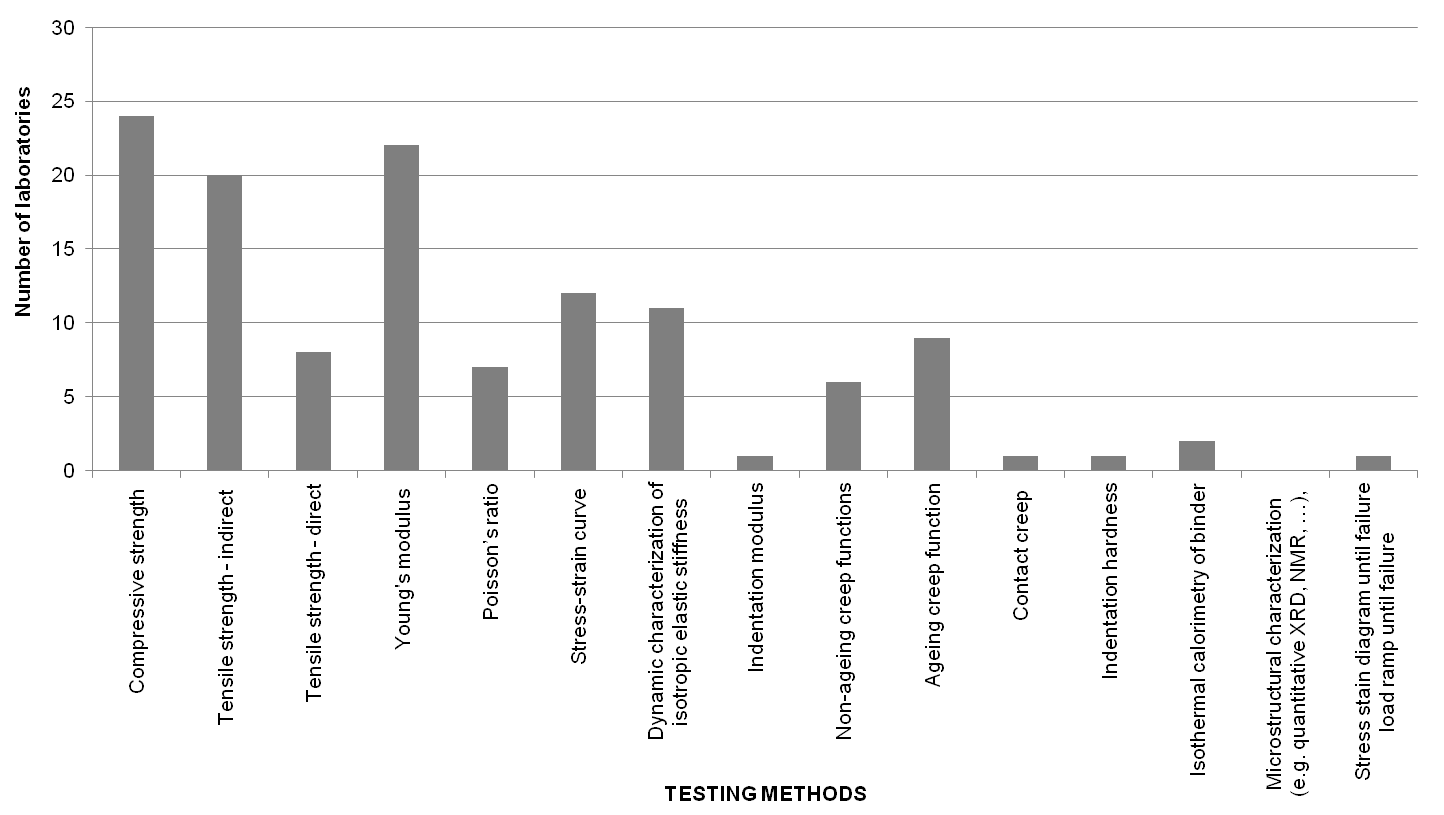
In the present RRT they will be represented by following properties:
- Compressive strength
- Bending strength
- Tensile strength
- Young's modulus and Poisson’s ratio.
Most of these methods are standardized and performed routinely in most of the participating laboratories. Nevertheless, there is still potential for improving repeatability and reproducibility of these methods and initiatives for their customization, which is the main objective of GP1d.
GP1e - Volume stability
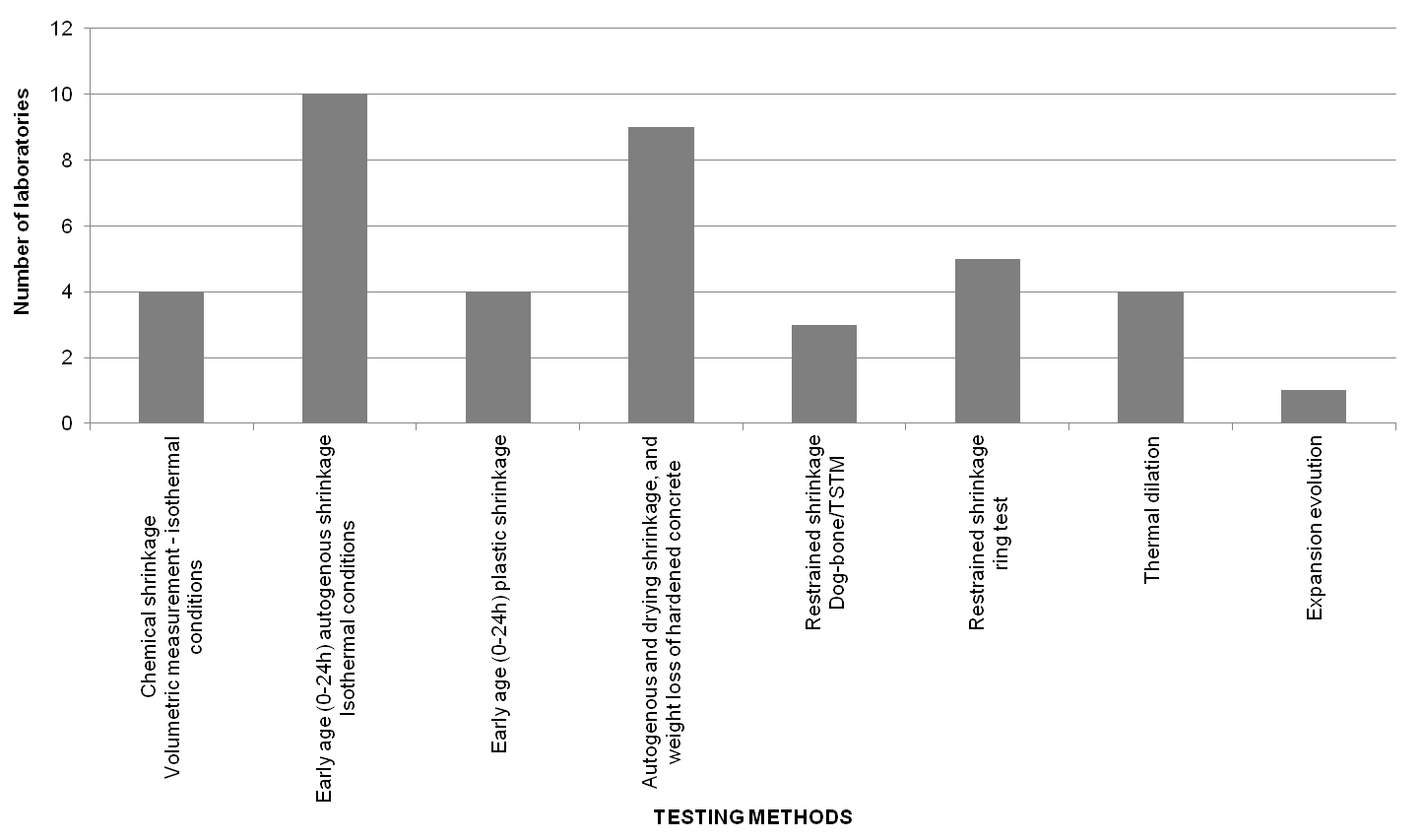
Following techniques are planned to be included in the RRT:
- Autogenous shrinkage
- Restrained shrinkage (dog-bone/TSTM, ring test)
- Creep or relaxation
- Thermal dilation.
The main benefit of RRT is to give a platform where all of the developed methods can be compared and validated under controlled conditions.
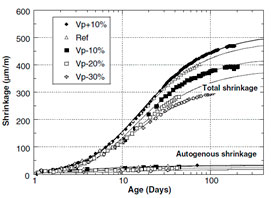
Total shrinkage and autogenous shrinkage of the concrete mixes with different amount of cement paste (Roziere et al. 2007)
GP1f - Fracture properties and cracking
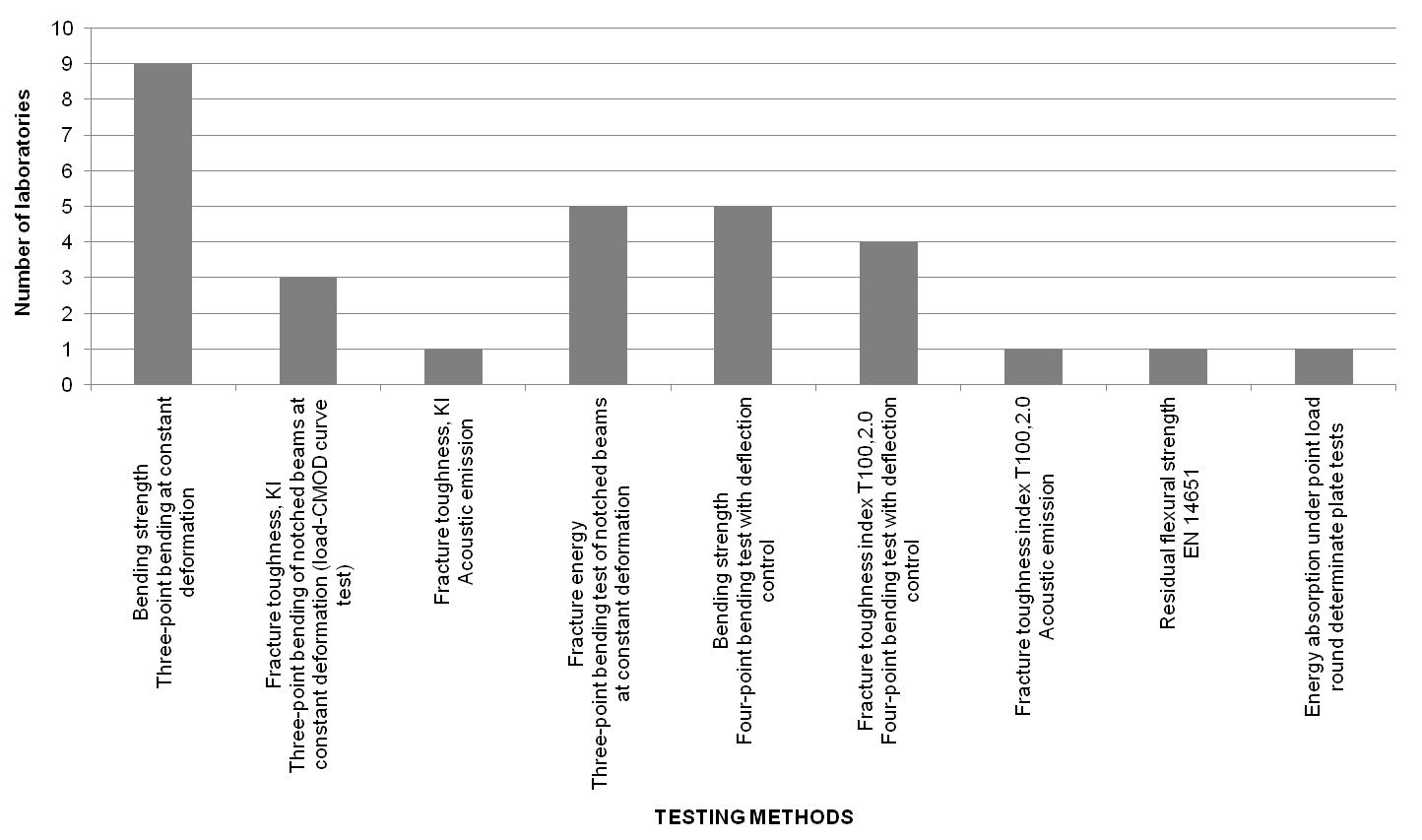
In the present RRT following tests will be included:
- Fracture toughness, KI
- Fracture energy
- Bending strength
- Fracture toughness index Τ100,2.0
Fracture behavior of ordinary concrete and fiber reinforced concrete will be monitored, to highlight the applicability and benefits of standardized and non-standardised non-destructive methods.

Comparison of fracture behavior and simultaneous monitoring od acoustic emission events
